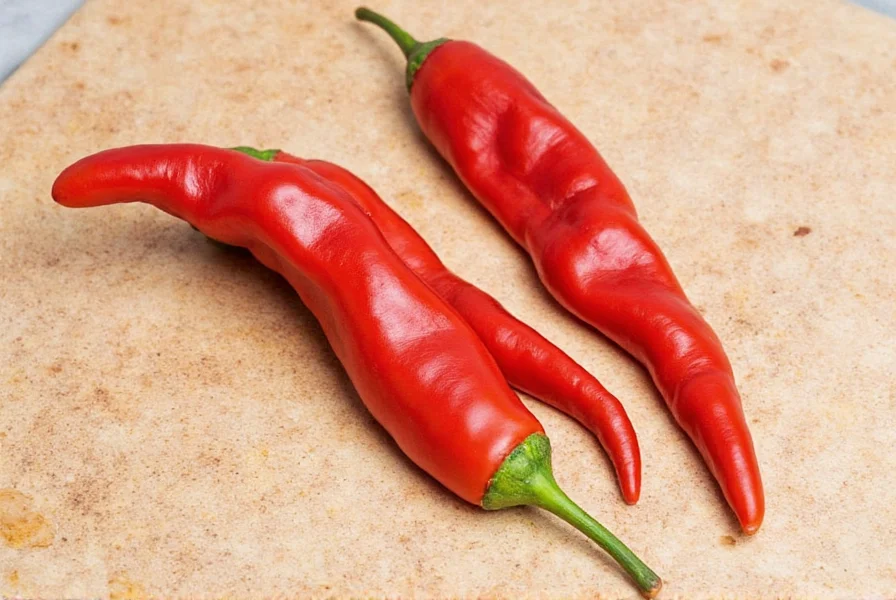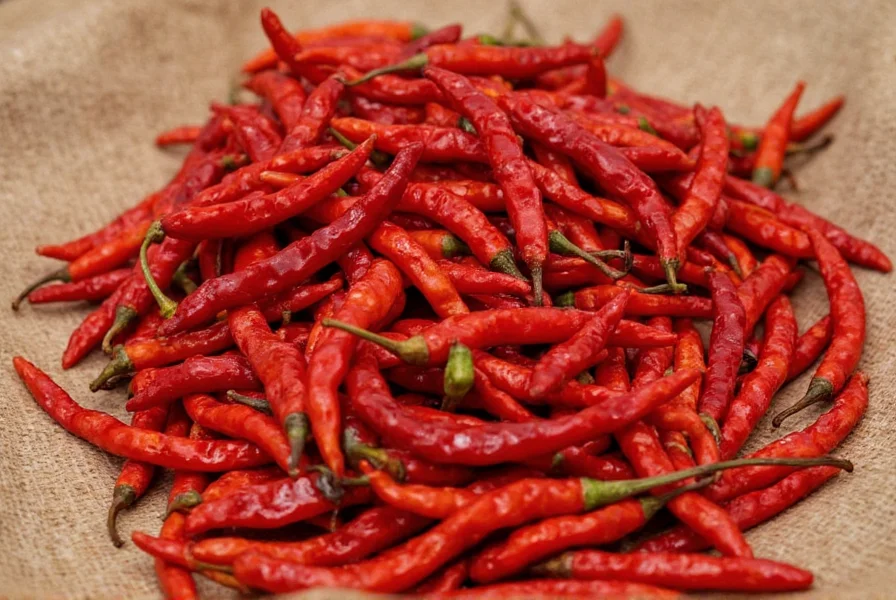Guajillo chile is a dried chili pepper native to Mexico, known for its mild heat (2,500–5,000 Scoville units), earthy sweetness, and smoky flavor profile. It's a staple ingredient in traditional Mexican cuisine, used in dishes like mole poblano, salsa roja, and chiles rellenos.
Table of Contents
- What Is Guajillo Chile?
- The Flavor Profile of Guajillo Chile
- Culinary Uses and Popular Dishes
- Buying Guide: How to Choose the Best Guajillo Chile
- Cooking Tips and Tricks
- Comparison Table: Guajillo vs. Other Common Chiles
- Frequently Asked Questions
- Conclusion
What Is Guajillo Chile?
The guajillo chile is a dried form of the mirasol pepper, originating from Mexico. Its name comes from the Spanish word for "little gull," referring to its elongated shape resembling a bird's wing. These peppers are harvested when fully ripe and sun-dried, which concentrates their flavor and enhances versatility in cooking. Guajillo chiles are characterized by their deep red color, smooth texture, and thin skin.

The Flavor Profile of Guajillo Chile
Guajillo chiles offer a complex flavor experience with mild heat (2,500–5,000 Scoville units), making them accessible for those who prefer less intense spice. The taste combines earthy notes, subtle sweetness, and a hint of smokiness, often described as a blend of dried tomatoes, raisins, and tobacco. This balanced profile allows guajillo to complement rather than overpower other ingredients in dishes.
Culinary Uses and Popular Dishes
Guajillo chiles are fundamental in Mexican cooking. Key applications include:
- Mole Poblano: A rich, complex sauce where guajillo provides foundational flavor and color.
- Salsa Roja: A smooth, tangy red salsa using ground guajillo as a primary ingredient.
- Chiles Rellenos: Stuffed peppers typically topped with a guajillo-based sauce.
- Caldo de Pollo: Hearty chicken soup enhanced by guajillo's depth of flavor.
Beyond Mexican cuisine, guajillo chiles work well in barbecue sauces, marinades, and international stews for added complexity.
Buying Guide: How to Choose the Best Guajillo Chile
Key Features to Look For
- Color: Bright red, plump chiles with no mold or discoloration.
- Texture: Dry but not brittle; avoid overly soft or moist specimens.
- Aroma: Strong earthy scent; musty or stale odors indicate poor quality.
Recommended Products
- Whole Guajillo Chiles (Dried): Ideal for grinding; trusted brands include Las Palmas and MexGrocer.
- Ground Guajillo Chile Powder: Convenient for quick recipes; Rancho Gordo and Pueblo Foods are reliable sources.
- Gourmet Chiles: Premium heirloom varieties available at specialty stores like La Tienda.

Cooking Tips and Tricks
- Soak Before Use: Soak in warm water for 20–30 minutes to soften and release flavor.
- Toast for Depth: Briefly sauté in a dry pan before soaking to enhance smokiness.
- Grind Finely: Use a spice grinder or mortar and pestle for sauces and rubs.
- Pair with Complementary Flavors: Combine with garlic, onion, cumin, and citrus for optimal results.
| Chile Type | Heat Level (Scoville) | Flavor Profile | Best Uses |
|---|---|---|---|
| Guajillo | 2,500–5,000 | Earthy, sweet, smoky | Sauces, stews, salsas |
| Ancho | 1,000–1,500 | Mild, sweet, fruity | Moles, enchiladas, roasting |
| Chipotle | 2,500–8,000 | Smoky, spicy, tangy | Barbecue sauces, adobo, stews |
| De Arbol | 15,000–30,000 | Sharp, peppery, citrusy | Hot sauces, marinades, pickling |
| Jalapeño | 2,500–8,000 | Peppy, grassy, slightly sweet | Raw in salsas, stuffed, pickled |
Frequently Asked Questions
What exactly is a guajillo chile?
A guajillo chile is a dried form of the mirasol pepper, native to Mexico. It's characterized by its long, narrow shape (typically 3-6 inches long), deep red color when dried, and smooth, thin skin. The name "guajillo" means "little gourd" in Spanish, though some believe it refers to the pepper's resemblance to a small bird's wing. These chiles are harvested when fully ripe, then sun-dried, which concentrates their flavor and makes them ideal for various culinary applications.
How hot are guajillo chiles compared to other peppers?
Guajillo chiles have a mild to medium heat level, ranging from 2,500 to 5,000 Scoville Heat Units (SHU). For comparison, a jalapeño ranges from 2,500-8,000 SHU, while a bell pepper is 0 SHU. This makes guajillo milder than many people expect—it's more about the complex flavor than intense heat. The heat is present but balanced by the chile's natural sweetness, making it accessible to those who aren't fans of extremely spicy foods.
Can I substitute guajillo chiles with other peppers?
Yes, but with some flavor differences. The closest substitutes would be ancho chiles (milder and fruitier) or pasilla chiles (darker and earthier). For recipes requiring both flavor and similar heat, a combination of ancho and New Mexico chiles might work. Chipotle can substitute for the smokiness but will add more heat. For the characteristic red color and mild heat of guajillo, you might try combining paprika with a touch of cayenne pepper, though you'll miss some of the complex flavor notes.
How should I store guajillo chiles to keep them fresh?
Store dried guajillo chiles in an airtight container in a cool, dark place away from direct sunlight and moisture. Properly stored, they can maintain their flavor for up to a year. For longer storage (up to 2 years), keep them in the refrigerator or freezer in a sealed container. Check periodically for any signs of moisture, mold, or loss of aroma, which indicate they're past their prime. Whole chiles last longer than ground powder, which loses potency more quickly.
Do I need to remove the seeds from guajillo chiles before using them?
It's recommended to remove the seeds and veins from guajillo chiles before using them. While guajillos are relatively mild, the seeds and inner membranes contain most of the capsaicin (the compound responsible for heat). Removing them gives you more control over the final heat level of your dish. Additionally, the seeds can become bitter when cooked, so removing them results in a smoother, more balanced flavor. When preparing guajillos for sauces or salsas, simply split them open and shake out the seeds before soaking.
Conclusion
Guajillo chile is a versatile and flavorful ingredient that enhances both traditional Mexican dishes and international recipes. Its balanced heat, earthy sweetness, and smoky notes make it indispensable for cooks seeking depth without overwhelming spice. Incorporate guajillo into your kitchen to elevate your culinary creations with authentic Mexican flavor.










 浙公网安备
33010002000092号
浙公网安备
33010002000092号 浙B2-20120091-4
浙B2-20120091-4